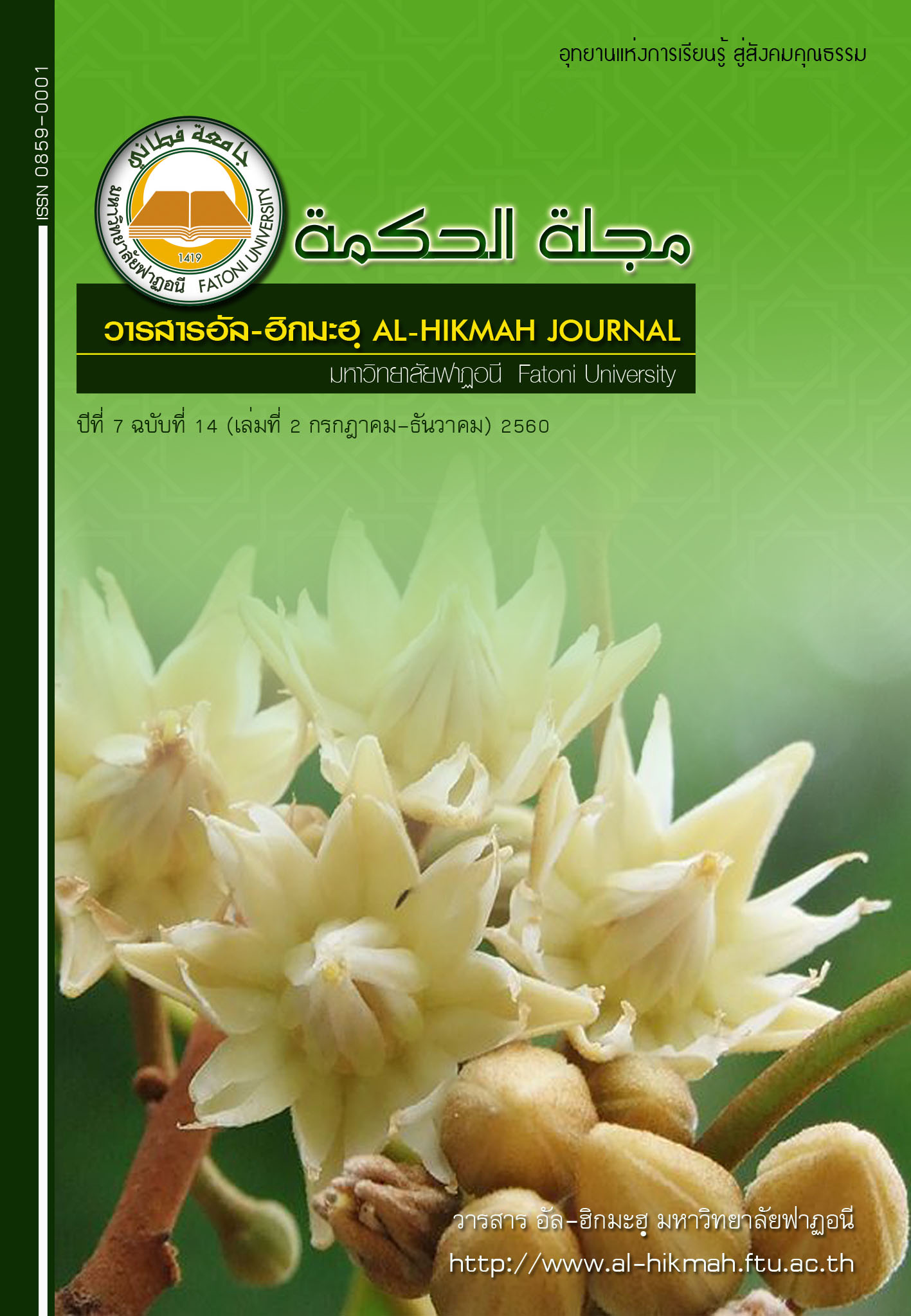การพัฒนามาตรฐานสากลด้านการอ่าน
Keywords:
มาตรฐานสากล, มาตรฐานการอ่านAbstract
The development of students for being efficient readers in order to have a desirable characteristic as a globally competitive citizen. One of the skills and abilities needs to be developed urgently is their abilities in reading which are the important factors need for a lifelong learning process in the social globalization. The purposes of this research were to 1) Analyze and synthesize a variety of information on reading of International Standards in Reading English Languagein the secondary level 2) The International reading standards development 3) Evaluate the standard of reading developed and study on the international reading standards in schools. The researcher used the method to analyze with the content analysis from the international PISA test of reading literacy, the reading curriculum standards in 4 countries, and the core curriculum of the Basic Education 2551 BE.
The results were as follows: the four international reading standards and indicators in the secondary level are rated beneficial to the evaluation based on PISA, the O-NET tests, continuing education and performance in occupation, and a good contribution to daily life reading.
International reading standards can be used to set the reading policy and focus on reading. To set the national agenda and strategies on reading. Curriculum development, additional courses and learning units design, instruction, development of media technology and innovation, as well as supplementary books. Development of the reading evaluation in line with international assessments, reading supervision, teachers’ development on reading literacy, to evaluate the reading quality of the matthayomsuksa 3 students before graduation, establishing teaching professional standards, and developing pedagogical curriculum in accordance with reading curriculum at all levels of education.
References
ทิศนา แขมณี. 2557. ศาสตร์การสอน: องค์ความรู้เพื่อการจัดกระบวนการเรียนรู้ที่มีประสิทธิภาพ. พิมพ์ครั้งที่18. กรุงเทพฯ: สำนักพิมพ์แห่งจุฬาลงกรณ์มหาวิทยาลัย.
นาตยา ปิลันธนานนท์. 2542. การศึกษาตามมาตรฐาน. กรุงเทพฯ: บริษัทสำนักพิมพ์แม็ค จำกัด.
นาตยา ปิลันธนานนท์. 2545. จากมาตรฐานสู่ชั้นเรียน. กรุงเทพฯ: บริษัทโรงพิมพ์ไทยวัฒนาพาณิชย์ จำกัด. สำนักมัธยมศึกษาตอนปลาย. 2553. แนวทางดำเนินงานโรงเรียนมาตรฐานสากล. สำนักงานคณะกรรมการการ ศึกษาขั้นพื้นฐาน กระทรวงศึกษาธิการ. กรุงเทพฯ: โรงพิมพ์ชุมนุมสหกรณ์การเกษตรแห่งประเทศไทย.
สำนักวิชาการและมาตรฐานการศึกษา. 2558. คู่มือการเรียนการสอน การอ่าน คิดวิเคราะห์ ตามแนวทางการประเมินผลนักเรียนร่วมกับนานาชาติ (PISA). กรุงเทพฯ: โรงพิมพ์ชุมนุมสหกรณ์การเกษตรแห่งประเทศไทย จำกัด.
สถาบันส่งเสริมการสอนวิทยาศาสตร์และเทคโนโลยี (สสวท.). 2554. ผลการประเมิน PISA 2009 การอ่านคณิตศาสตร์และวิทยาศาสตร์ กรุงเทพฯ: ห้างหุ้นส่วนจำกัด อรุณการพิมพ์.
สำนักงานเลขาธิการสภาการศึกษา. 2552. ข้อเสนอการปฏิรูปการศึกษาในทศวรรษที่สอง (พ.ศ.2552-2561). กรุงเทพฯ: บริษัท พริกหวานกราฟฟิก จำกัด
สำนักงานเลขาธิการสภาการศึกษา. 2558. โครงการปฏิรูปการเรียนรู้สู่ผู้เรียน (พ.ศ. 2557-2560) “สะท้อนปัญหาและทางออกตอบโจทย์ปฏิรูปการศึกษาไทย. มีนาคม 2558.อันดับที่ 7/2558. บริษัทเซนจูรี่ จำกัด. กรุงเทพฯ.
สำนักงานส่งเสริมสังคมแห่งการเรียนรู้และคุณภาพของเยาวชน(สสค.). 2557. การยกระดับคุณภาพครูไทยในศตวรรษที่ 21. กรุงเทพฯ: บริษัท มาตา จำกัด.
Gandel, M. 1995. Education Leadership. “Not All Standards Are Created Equal”. March, 16-21. 1995.
Goodman, KS. 1970. Behind the eye: What happens in reading. Reading: Process and program. (pp. 94-108) Urbana IL. National Council of Teachers of English.
Ministry of New Zealand. 2012. Reading and Writing standard. (Online)
http//nzcurriculum.thi.org.nz/National-and-writing- standards. May, 26. 2012.



